The Effects of the Textiles Industry on Ecology Worldwide
We wear, use, and decorate, with textiles, yet we know very little about them and further more we know very little about their impact on our very own bodies when we use them. Further more we know very little about the impact they make on the ecology of our valuable Earth.
The textile industry encompasses many different types of fabrics shared between natural fibers such as wool, silk, linen, cotton, or hemp and then man-made fibers, the most common ones would be synthetic fibers namely polyamide, acrylic, polyester, elastane, or lycra. Most of these synthetic fabrics are made from petrochemicals, these are cheap and easy to care for, which is why they are becoming the industries miracle drug. The textile industry is becoming more and more divers due fabric process and means of employment. Most synthetic fibers are hard to recycle, (nylon takes 30-40 years to decompose) and they create heavy pollution.
Chemical Based Procedures of Textile Manufacturing
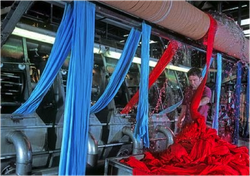 There are eight basic steps when producing textiles to be sold. The first step is called Scouring. This is when the raw textile materials in the natural form (dirt, pesticides, fungicides etc. are in the material) undergo a pretreatment to ready them to be worked on at a factory level. This includes wetting agents and peroxides stabilizers. Bleaching is the decolonization of the fabric; on natural fibers using Oxidative bleaching or reductive bleaching completes this process. These steps contain sodium, hypochlorite, sodium hydrosulphite, and hydrogen peroxide. Desizing is the third step in the process. During weaving sizing agents are added to the fabric, after weaving the material is treated with chemicals such as acids, alkalis, or oxidizing agents in a proses called desizing. Fabric softening is designed to prevent static cling and make the fabric softer to the touch by coating the fabric outsides with a thin layer of chemicals These chemicals contain lubricating properties and eclectically conductive properties. Mercerization is the step where fabric is treated with a caustic solution to making the fibers stronger, prevent shrinkage, improve luster and so on. High-end fabrics may undergo this process twice. The Dyeing process includes large amounts of dyestuff, thinking agents, water, dispersing agents, leveling agents, acid buffs etc. are used in the step of the process; most dyes are water soluble and applied as an aqueous solution. Lastly is the Printing step, this is when color is imparted onto the fabric. In this step different dyes and agents are added to the fabric along with various chemicals and acids.
There are eight basic steps when producing textiles to be sold. The first step is called Scouring. This is when the raw textile materials in the natural form (dirt, pesticides, fungicides etc. are in the material) undergo a pretreatment to ready them to be worked on at a factory level. This includes wetting agents and peroxides stabilizers. Bleaching is the decolonization of the fabric; on natural fibers using Oxidative bleaching or reductive bleaching completes this process. These steps contain sodium, hypochlorite, sodium hydrosulphite, and hydrogen peroxide. Desizing is the third step in the process. During weaving sizing agents are added to the fabric, after weaving the material is treated with chemicals such as acids, alkalis, or oxidizing agents in a proses called desizing. Fabric softening is designed to prevent static cling and make the fabric softer to the touch by coating the fabric outsides with a thin layer of chemicals These chemicals contain lubricating properties and eclectically conductive properties. Mercerization is the step where fabric is treated with a caustic solution to making the fibers stronger, prevent shrinkage, improve luster and so on. High-end fabrics may undergo this process twice. The Dyeing process includes large amounts of dyestuff, thinking agents, water, dispersing agents, leveling agents, acid buffs etc. are used in the step of the process; most dyes are water soluble and applied as an aqueous solution. Lastly is the Printing step, this is when color is imparted onto the fabric. In this step different dyes and agents are added to the fabric along with various chemicals and acids.
Why this is Important and what Effect does it have on Humans?
It is found that 70% of the problems with manufactured fabrics occur in the finishing steps. The problems being with the fabric themselves, discoloration and so on, but also this step have the largest effect on humans. These chemicals used in the steps above impact us directly when we put these products on our bodies, causing unknown chemical seepage and allergies as well as known problems like rashes and so on. A majority of these chemicals have been known to cause cancer, genetic mutation and be generally toxic. Chemicals such as
• Alkylphenolethoxylates (APEOs)
• Pentachlorophenols (PCP)
• Toluene and other aromatic amines
• Dichloromethane (DCM)
• Formaldehyde
• Phthalates
• Polybrominated diphenyl ethers (PBDE’s)
• Perfluorooctane sulfonates (PFOS)
• Heavy metals – copper, cadmium, lead, antimony, mercury among others
These chemicals provide a massive problem for humans, but also the environment.
The Impact on the Ecology and Economy
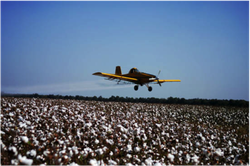 While the factory portion of the industry produces waste and pollution very seldom do we think of the raw fiber- agricultural side of the industry. For example, cotton is the most pesticide invasive crop worldwide. This crop also undergoes herbicide as well as often times chemical defoliants, these chemicals remain with the fabric even after finishing and release throughout the life span of that fabric. Another astonishing factor is how much water is used in growing cotton alone, for example it takes 257 gallons of water to create just a t-shirt from the growing process up to the finishing process. There are many other problems with the agricultural side of textiles. The UK is known for having agricultural as well as craft workers suffer from high exposure to organophosphate sheep drip problem from the wool industry located in those regions. Another example is that many synthetic fibers don’t biodegrade at all (nylon and polyester). A different synthetic fiber known as Rayon is actually made from wood pulp that undergoes heavy acid treatments and plays a large role in the lumber industry. The last example from an agricultural stand point is the leather industry that is suffering heavily from a lack in supply with solutions that are controversial to animal rights as well as the tanning and dyeing process causing pollution.
While the factory portion of the industry produces waste and pollution very seldom do we think of the raw fiber- agricultural side of the industry. For example, cotton is the most pesticide invasive crop worldwide. This crop also undergoes herbicide as well as often times chemical defoliants, these chemicals remain with the fabric even after finishing and release throughout the life span of that fabric. Another astonishing factor is how much water is used in growing cotton alone, for example it takes 257 gallons of water to create just a t-shirt from the growing process up to the finishing process. There are many other problems with the agricultural side of textiles. The UK is known for having agricultural as well as craft workers suffer from high exposure to organophosphate sheep drip problem from the wool industry located in those regions. Another example is that many synthetic fibers don’t biodegrade at all (nylon and polyester). A different synthetic fiber known as Rayon is actually made from wood pulp that undergoes heavy acid treatments and plays a large role in the lumber industry. The last example from an agricultural stand point is the leather industry that is suffering heavily from a lack in supply with solutions that are controversial to animal rights as well as the tanning and dyeing process causing pollution.
When textile manufacturers start producing, they often use massive amounts of water as ever step in the finishing process is treated in water, this creates to problems: Attaining so much water and second what happens to the water after it has been mixed with chemicals? Another problem is the disposal of used chemicals and waste, because many countries have strict pollution regulations (how to dispose of water, chemicals, regulations on water and types of chemicals etc.) and the coast to follow these regulations a common trend is to “outsource manufacturing”. The side effect of this procedure is that while manufacturing and its pollution is in and affects every country more countries with less strict regulations are taking the brunt of the manufacturing work and there for pollution. Countries in east Asian who do the most manufacturing due to lax government regulations, seem to have the highest amount of textile population and child labor as well as poorer working conditions given the higher demand, to serve the world market, thought this is a huge money maker for those countries, their ecosystem and nation suffers for it.
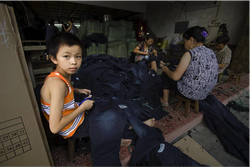
In conclusion the impact of textiles is massive to the environment including chemical dumping in the world’s water supply, agricultural problems and then impairments to human bodies as well as human rights. However with more research done on the topic many organizations are creating more “eco” friendly ways of manufacturing. Where there is a will there is a way.
Environmental and social impact of textiles - presentation in Spain, January 2016
Today we face many challenges, like the environmental and social cost of producing textiles. According to Amigos da Terra Ourense-Friends of the Earth, the obsolescence of textiles poses the problem of two collections being presented each year, with the psychological pressure on consumers, who want to be in fashion, and an impact on resources. They give us the example of T-shirts, with over 2 billion sold every year worldwide, each person in Spain buying 8-9 Kg of clothes per year and 390,000 tons of textiles being trashed in Spain alone.
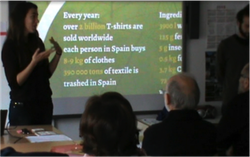
As for the environmental impact, they explain that in order to produce one cotton T-shirt we need 3,900 litres of water, which means about 26 bathtubs. Additionally, 125 grammes of fertilizers are needed, along with chemicals like insecticides, or those used in dyeing.
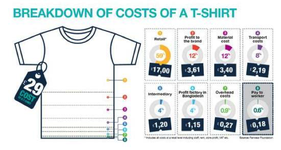
The social impact is also high because, of the total price a customer pays for a piece of clothing, very little goes to the person who actually sewed it The fact that some factories are in Asian countries, where labour laws are very lax, is also a risk of child labour or difficult working conditions in some cases. There is a social challenge, as in many other sectors.
What can we do?
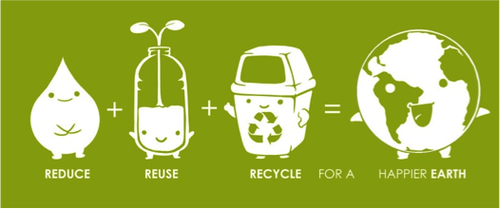
Fortunately, by recycling one ton of textile, we save 7 tons of CO2. They also suggest repairing and with their project https://alargascencia.org/es, they intend to extend the lives of our possessions. They recommend shops where we can rent, exchange, repair or adapt anything we need, before buying a new one without thinking of these possibilities.
From flax to fabric
The traditional linen process
With highlighted special terms - for more translations please visit Glossary
The flaxseed/liñaza is cultivated at the end of April, or in May. From seed planting, it is ready to be harvested in about a hundred days. The plant is not cut, but uprooted/arrigado.
Then the flax undergoes the removal of seeds or threshing/ripado with a ripple/ripo. Flax stalks/marrucos are then immersed in stagnant or slowly-moving waters, like ponds, bogs and streams for some weeks. This process is called water retting/embriar and it produces the highest quality fibers.
The retted stalks, called straw, are dried mechanically or in natural air, and are then usually stored for anywhere from a few weeks to months in order to allow curing to take place. After curing, the woody stalks that still cling to the bast fibers are further broken, a process called scutching/mazar o liño , using a break/tascón and later on a scutching sword/espadela.
The small pieces of leftover bark that remain after scutching are called shive/ casca, and are sometimes used as a filler in thermoplastic composites.
The separated bast fibers are next heckled/anciñado, or combed with heckling combs/rastros through a bed of nails that splits and polishes the fibers, and removes the shorter tow fibers from the mix. These tow fibers/ estopa can then be spun into a coarse yarn from which low-quality linen products are made. The longer fibers are then ready for spinning/fiar.
Two tools are used for spinning, the distaff or rock/roca and the spindle/fuso, fom which the fibers are hung. Flax is always spun very finely-especially the longest of the fibers-resulting in a thin yarn/fío, then winding the yarn onto a bobbin/mazaroca. The yarn is often slightly dampened during spinning, which helps prevent fly-away strands from escaping the twist and creates an especially-smooth yarn.
Bleaching/branqueo is the next step. The resulting yarn is typically finished by boiling for several hours in soapy water, sometimes with oakwood ashes, which gives it a nice shine. Yarns are then wound onto spools/ novelos by using a winder/sarillo. The resulting spools can already be used by the weaver/tecelá. Linen yarn is generally woven into sheets-a process in which multiple threads are interlaced both horizontally and vertically on a loom/tear.
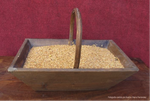
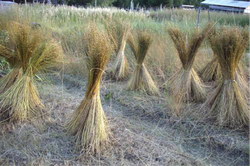
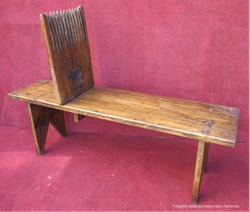
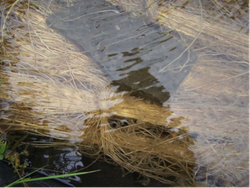
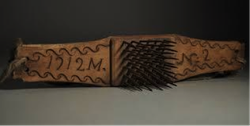
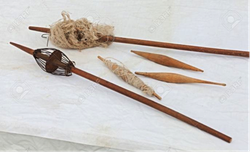
Colouring with natural plans
Plant dyes are used for colouring wool, linen, cotton, semi-synthetic fibre, leather, wicker wood and roots.
Natural dyecolour is durable and does not fade when washed. (Resistant to alkaline liquids and the sun.) Especially resistant to fading are colours, which are obtained from a plant or its bark infusion. Only materials coloured by flower infusions are more affected by sunlight.
Dyeing with natural dyes formed as an independent branch of folk art in which each master shows his/her craft, traditional and newly acquired different work techniques.
In Latvia dye is made from nearly all wild and many cultivated plants. By using a variety of colouring techniques and mordant, from a single plant you can get a number of different colours and tones.
Plants can be collected, crushed, boiled and fibres coloured are allowed only if the hands are without injuries and inflammations. This is especially important when working with plants containing poisonous substances.
The plants are collected in a dry, sunny mornings, when the dew has dried off. In rainy weather you can collect lichens, roots and rhizomes, because they are washed before drying. They are collected in autumn or before blooming.
Plant collection ought to adhere to wildlife protection. The plants cannot be collected in reserves, protected areas, national and natural parks, and in the green areas around cities. Protected plants recorded in the Red Data Book should not be used for colouring.
Colour tones depend on whether the dye is made from fresh or dried plants. Taking larger quantities of plants the colouration will be darker and more permanent.
Fresh herbs give brighter and more intense colour. Dried plants will result in more greyish and paler colours.
For plants to give more intense tones, plant are processed - dried in the sun and wind, occasionally sprinkling with water until they become pink. Fermentation also can be used to make plants give more striking colour.
Fermentation is performed by soaking plants and fibre in a pot that is closely sealed with a thick cloth or polythene film and left untilit ferments.
The first rule of painting: good, clean, high-quality colouring material. To achieve maximally even coloration the fibre must be clean. It can only be washed with unscented soap.
In order to make the dyes more durable they must be treated with mordant. This can be done by natural or chemical materials. The quality of fibres processed with natural mordantis less affected.
If the yarn is treated with mordant before dyeing chemicals affect the fibreless. Longer maceration in strong alkalis will make the fibre brighter.
Dolores Rodríguez García
History teacher José Antonio Álvarez interviews literacy student Dolores Rodríguez, now 70. She explains in Galician the linen and wool process when she was a child
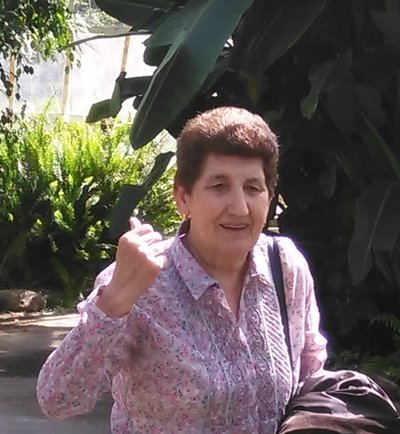
Dolores Rodríguez García, Lola, é una señora que ten moita experiencia na industria do textil, tanto no liño como con traballos coa lá.
Imos coñecer algunas características do seu traballo.
Pregunta – Hai moitos anos que xa empezou nesta actividade?
Resposta – Si, si, vai moitos anos, de pequeña.
- Moi ben. Porque xa ten vostede máis de 70 anos, así que… Cando empezou a traballar na industria do liño?
- Pareceme que foi aos 20 anos ou antes, porque de pequeña xa facíamos eso, porque íanos coa nai e co pai a arráncalo e a ripalo, a mazalo, …
- Ou sexa que xa de nena.
- Si, de nena, cando eramos pequenos, que non como agora, grandes.
- Ou sexa que xa axudaba de nena, pero coñeceu todo o proceso con 20 anos.
- Si, no tear, por exemplo. O outro facíamolo antes: para arráncalo e ripalo, e fialo, e espadalo. Todo eso facíamolo antes, de pequenos.
- Quen lle ensinou nos seus inicios?
- Miña nai e miña tía.
- Ou sexa que era una cuestión sobre todo familiar. De mulleres, ou os homes tamén interviña?
- Non, máis as mulleres que os homes. Os homes ían alía o conto, como digo eu. Ben, mazar si o mazaban, tamén nos axudaban. Para cuestión de forza. As habilidades eran as das mulleres, todo.
- Con quen traballaba? Ou facíao vostede soa?
- Nós soas. Por exemplo, se te axudaba a nai ou as irmás, ou o que tiveras, facíamolo nós.
- En que lugares se facían? Nas casas, no campo?
- Espadar, espadabamos nas casas, pero o outro facíamolo na nosa casa. Alí, na rúa, fóra, por exemplo, no tempo bo. E para fiar íamos para o monte ou en casa, asegún. Ao mellor, as noites no afiadeiro.
- Que era o afiadeiro?
- Que nos xuntábamos nunha casa, por exemplo hoxe na túa e mañán na miña e fiábamos alí, estábamos alí.
- Polo tanto, era o sitio onde podían dialogar, aprender cousas e falar das cousas…
- Si, si. E ó mellor os homes xogaban ás cartas e nós fiabamos contando contos e así, cousas.
- Ou sexa que era un lugar de reunión social, tamén.
- Si.
- De que zona estamos falando?
- De Penouta, no concello de Viana do Bolo.
- Cales eran as características do proceso do liño? Facía vostede todo o proceso.
- Si. O que era do liño, todo.
- Desde a sementeira ate a …
- …ate as camisas. Ben, as camisas non, porque eu non era costureira. Nós tecíamolo, no tear.
- E despois entregaban o tecido…
- Ou viña una costureira e cosíache, facíache as cmisas para os homes.
- Dígame como era a fase da sementeira de liño e como se consegue, porque eso facíao vostede.
- Si. Gardabamos a semente, e depois nunha terra grande sementabámola munha leira, e sementabámolo alí e despois, ao estar seco, collíamos a semente outra vez, ripabámolo, e collíamola semente, gardabámola semente, poñíamola a secar e despois de ripalo metíamolo nunha poza e despois sacábase e mazábase.
- Canto tempo tiña que estar na poza?
- Paréceme que uns dez días ou vinte, máis ou menos. Despois poñíalo a secar e xa o mazabas e o espadabas, cunha fitoira. Unha fitoira, así, de pé, coma unha mesa e despois dábaslle coa espadela.
- E co espadelado conseguíanse as fibras máis finas?
Non. Eso era coa roca. Afíabase así, como o pelo da cabeza. Coa roca conseguíase así e déspois o fuso.
-Primeiro tiñan que lavalo, despois espadelalo. Peinabano, verdade?
- Claro. Como se peinaras, eso. Logo directamente ao fuso e á roca.
- Metíase no sarillo?
- Si, ensarillábase.
- Explique como é eso.
- Ensarillábase e metíase no sarillo. Despois poñíase a cocer as cadeixas nunha caldeira grande, e despois poñíase a clareo. Facíase como un canelo de sabugueira, íao así facendo para meter no tear. Chamábanlle una lanzadeira. E íalo tecendo.
- Blanqueábase o liño?
- Si, metido no caldeiro a cocer e botándolle cinsa. E logo tirabámolo nun prado, a clarear.
- A cinsa das árbores conseguía clarear o liño.
- Eso! Mira que a cinsa! En vez de xabón, cinsa!
- Si. Era un sistema antigo para lavar a roupa, tamén.
- Si, limpo era, porque o poñías a clarear e botábalo alí, e despois lavábalo ben no regueiro, no río, e entón, despois tecíalo.
- Era un sistema intelixente. A cinsa usábase tamén para lavar a roupa, era un limpador natural. Para espadelar, necesitábase forza?
- Siii! Para darlle si, porque era unha feitura grande e ti poñías o trozo de leño e dábaslle así.
- Entón aí a xente máis forte ou máis nova era a que se encargaba do espadelado, habitualmente.
- Claro. Todo Díos, pero un podía máis ca outro, pero dáballe así, coa espadela e a fitoira.
-Nos fiadeiros, pasábase ben? Dixo que viñan os homes tamén para folgar. Cantas horas podían estar, desde que hora a que hora, traballando?
- Boh! Aínda estábamos moitas horas. Porque despois íamos a cear, porque por exemplo íamos para este veciño e dabánola cea e íamos para outro e dabánola cea.
- Cada día era distinto.
- Claro, cada día era distinto. E se ti non podías, pois facíalo ti soa pola túa man. Quen non puidera, facíao ela, en vez de facelo nun día faciao en dous ou tres, espadábalo. E se non lle podías dar de comer á xente, ou o que fora, pois facíalo ti. Se había dúas ou tres mulleres facíalo ti na túa casa.
- O tecido era individual? Cada familia tiña o seu telar?
- Case si. Agora quitáronos, pero case tiña o seu telar, si.
- E polo tanto, tiñan que saber. Eran as mulleres as que sabían tecer, habitualmente?
- Si, os homes non.
- Había moi bo ambiente no…
- No pobo? Si, había. Porque eramos moita xente, xente nova, homes e mulleres.
- E nos fiadeiros había moi bo ambiente?
- Si. E decíamos cantares, pero eu agora non me acordó deso. Ou decíanche versos, aquel mozo ou aquela moza, ou así.
- Ou sexa que era una forma de reunión social, de futuros noivados.
- Si, pasábase ben.
- Co liño, en función do fío podíase facer distintos…
- Facíanse as colchas de liño de lá, feitos ao tear. Facíanse faldas de liño se querías e lá, ou de liño só, do que quixeras. Ben, facíachas a modista pero ti tecíala, e facíachas. E despois, ao mellor, bordábanas. Por exemplo, eu tiña una tía que tiña unhas faldas preciosas. E facíanlle en verde, por exemplo dunha cor ou doutra cor,…
- Mesturando distintos fíos.
- Si. Distintos fíos, porque os tinxías ti, traías tinte e tinxíalos en casa, por exemplo.
- Entón, unha vez feita a prenda podíase tinxir.
- Si, tinxíala. Por exemplo, tinxías aquel fío daquel cor ou daquel e o autor deixábalo de liño [da cor natural do liño], ou coma ti quixeras, de máis cores. Podíanse mesturar distintos tipos de cor, si.
- Co liño, en función do fío que fora (máis fino ou máis groso) obtíñanse destintas prendas. Co máis fino, que se facía?
- Co máis fino facíanse as sabas para que non picaran tanto na cama e facíanse as camisas dos homes. E cos outros facíanse tamén outras sabas e facíanse os xergóns, e logo metíaslle palla, da que se mallaba alí. E dormíase alí, metíase a palla e dormíase naquelo.
- Polo tanto, o traballo do liño era moi completo.
- Pero que traballo, chaval!
- E tardábase moito en todo o proceso?
- Si.
- Por exemplo, un tecido para facer unha falda de muller, canto tempo podía levar?
- Aínda levaba! O que é e que ó mellor facías, por exemplo, o tempo que tiveras, por exemplo, poñíaste a tecer un pouco e facías un trozo e logo ó mellor tiñas que ir coas vacas ou coas ovellas ou para outro lado e deixabas aquello e marchabas. Logo, outro día tiñas máis tempo e estabas una hora ou estabas dúas, asegún. Non estabas todo o día, porque tiñas que ir para o campo.
- Polo tanto, era complementario para o traballo diario.
- Claro. Ó mellor facías a metade, facías aquel trozo, pero despois ó mellor tiñas que ir coas vacas, recoller a herba ou o que fora. Non estabas todo o día no tear, porque non podías, tampouco. Tiñas máis cousas que facer: dar de comer ós porcos, ou ás pitas,…
- Ou seca que vostedes fundamentalmente eran xente que traballaban no campo e adicionalmente..
- Ou tiñas que apañar a remolacha ou tiñas que ir a apañalo pan, ou tiñas que.. Bueno! Anda que non levábamos traballo! Entón non estabas contínuo para dicir: “estou todo o día tecendo”, non podías, non tiñas tempo. Como era para a casa, íalo facendo ó teu xeito, hose un trozo e mañá outro trozo, e así, pasábala vida así.
- Eso implicaba moito traballo.
- Claro, porque había moito.
- Canto tempo podía tardar desde a recollida do liño ate facer unha peza de roupa?
- Dous meses, máis ou menos, porque como non se estaba só a eso, como había máis cousas que facer… Se estabas no tear, si, tecías enseguida. Unha colcha, por exemplo levábache ó mellor un día ou así e xa a tecías, pero se estabas todo odía a eso. Pero se non, acababas de tecer aquel trociño e xa te decía a nai ou o pai , “ale, vaime polas vacas” ou “ide polo pan” ou “ide para outro lado”, e entón deixabas aquelo e marchabas. Outro día tiñas máis tempo e volvías. E así…
- Igual que lle ensinou a súa nai e algunha das súas tías, vostede ensinou a alguna xente nos fiadeiros?
- Non, porque todo o mundo o sabía facer. Tamén aprendían de min e das súas aboas, e das tías. Porque na aldea todo o mundo facía eso.
- Aprendíase conxuntamente ente mulleres, dixo.
- Entre mulleres, si.
- Entón o proceso era: ensarilar, o sarillo, logo había que cocer…
- Si, as clareixas.
- Con caldeiros de cobre, non? E con cinsa.
- Si, ou dos outros caldeiros, dá igual, o que houbera. Había que clarealo e ensarillalo. E ao ensarillalo xa o levabas a o tear, porque xa estaba limpo e xa ías a facer as sabas e as colchas e as camisas e todo aquelo. Pero antes de eso, daba moito traballo.
- Unha vez eso feito, podíase bordar, ou, como dixo vostede, tinxir.
- Si. Se querías bordar, bordábase. Se non, facíalo de outra maneira, claro. O que quería bordar unha falda, pois bordaba a falda e o que non, facía camisas ou facía sabas e os xergóns e facía todo aquelo.
- E todo esto para a casa, nunca para a venda.
- Non, era todo para as casas, era do que vivíamos, claro.
- Era a necesidade.
- Era a necesidade, claro, porque non había para comprar, por exemplo, unas sabas ou non había para as camisas dos homes ou non tiñas para os xergóns, e facíalo así. Era o que había antes, era a miseria, como digo eu.
- Era un sistema distinto ao de hoxe en día.
- Pasar, pasábamolas duras. Traballamos moito. Así está unha agora!
- Pero pasábase ben, tamém?
- Si, neso si. Pasábase ben, si. Era peor meter a herba e o pan, aínda que eso. Daba máis traballo. Tiñas que andar todo o día no monte… E eso non. Dá traballo, porque era moi duro, pero estabas en casa, e era de outra maneira. No fiadeiro pasábalo ben, Se podías fiar hoxe un pouco, fiabas mañán outro pouco, e así. Ninguén te obrigaba, porque como era para a casa… Non era dicir, fago para aquel veciño aquela colcha, ou fago aquela saba. Non, cada un facíamos o noso.
- Sabe, máis ou menos, cando foi a última vez que fixo un …?
- Non me acordo cando foi a última peza que fixen. Xa vai moitos anos. Despois marchei a Barcelona, xa ía tendo algo máis e xa se ía deixando de tecer.
- Hai aínda todavía vecinos que teñen…
- Roca. Os teares quizás o quitaron todos, non sei se hai algún veciño que o teña. A roca e o fuso aínda andan por alí.
- Eso para o liño. Tamén para a lá das ovellas?
- Para a lá das ovellas tamén vale eso.
- E facía vostede algunha…
- Facías xerseis e facías calcetíns. Non tiñamos… non había pantalóns. Tíñamos que facer medias, ás agullas.
- As ovellas, como as rapaban?
- Cunhas tesoiras, quitabámoslle a lá, logo lavabámola e facíamolos calcetíns ou xerseis ou mantóns para taparte.
- Cal era o proceso coa lá? Unha vez que rapaban a lá da ovella…
- Lavábala, porque estaba moi sucia. Lavábala no regueiro. Tiñas que quecer a auga e metela alí, na auga quente, e logo xa sacábala de alí e ías ó regueiro a lavar. Logo xa, poñíalo a secar e xa facías os calcetíns, ou medias ou un xersei, unha chaqueta. E logo, de que vivíamos? Deso! Para taparnos, non era como agora.
- E se era necesario, mesturaban distintos ingredientes, liño e lá, nun mesmo obxecto?
- Ben, para as colchas botabásmoslle liño e lá. O que quería, e o que quería tela só de liño, tecíao e quen quería de lá, de lá. Eu teño agora catro colchas feitas. Non lle dou aprecio ningún agora, porque o liño pesa, non é como os edredóns de agora.
The studio “Ritausma - women club of “Islice”
The Studio was established in 1957 by museum fancywork hobby-group participants. Now it works as a museum department that investigates, compiles and popularizes traditions of national handicraft. Masters in weaving can give advice in making and supplying national costumes of Zemgale. You can order a product you like.In the weavers’ workshop you can see the manner of making fabrics – modern or traditional. It is an interesting place to acquaint with cloths and national costumes made in loom that will give you an idea about colourful ethnography of Zemgale.You may flex your muscles in the ancient craft. We offer you an individual training. Exhibitions of the participants’ works are regularly organized.
You can see the 19th century farmer’s room furniture and household objects in the exposition hall.